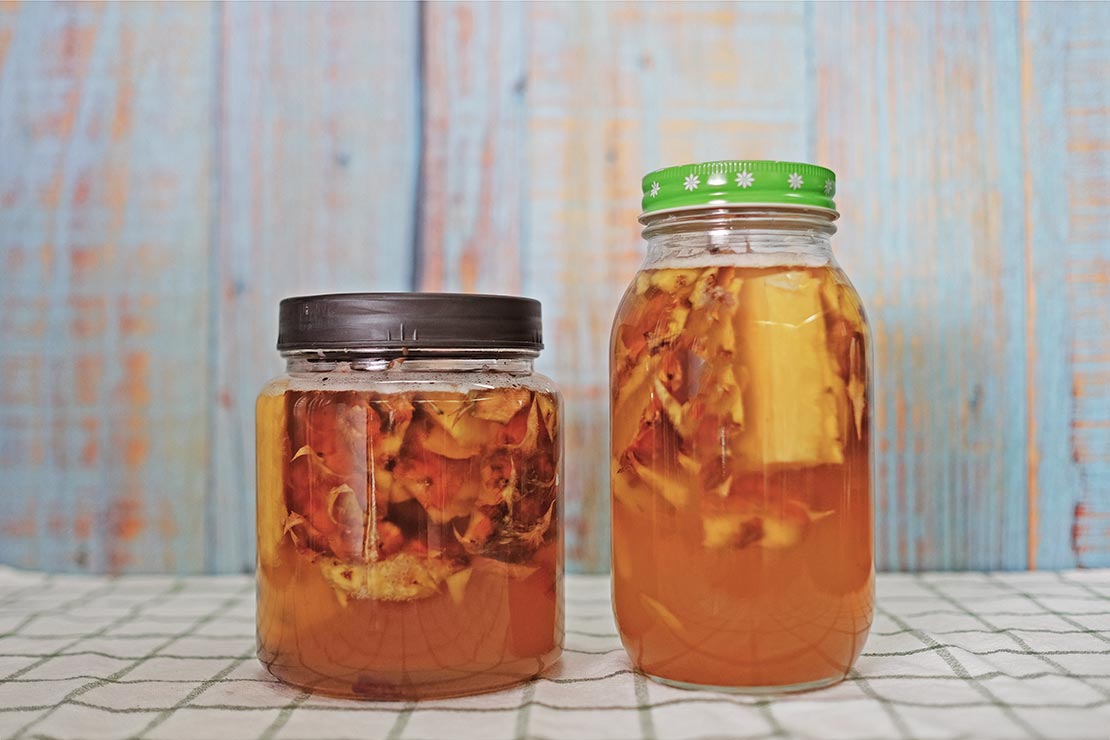Move aside, sourdough. There is a new fermentation project in town, and it is beneficial both for your gut and the environment. Tepache de piña [pronounced te-pat-shei de pi-nya], or simply tepache, is a lightly fermented pineapple beer that has its roots in the Aztec people of Mexico. The drink is traditionally made at home from family recipes, though it is not uncommon to find it peddled by trolley-pushing street vendors. The Mexicans treat tepache like a carbonated soft drink and is usually sipped from a plastic bag with a straw on the go or as mixers for beer and spirits.
What is tepache?
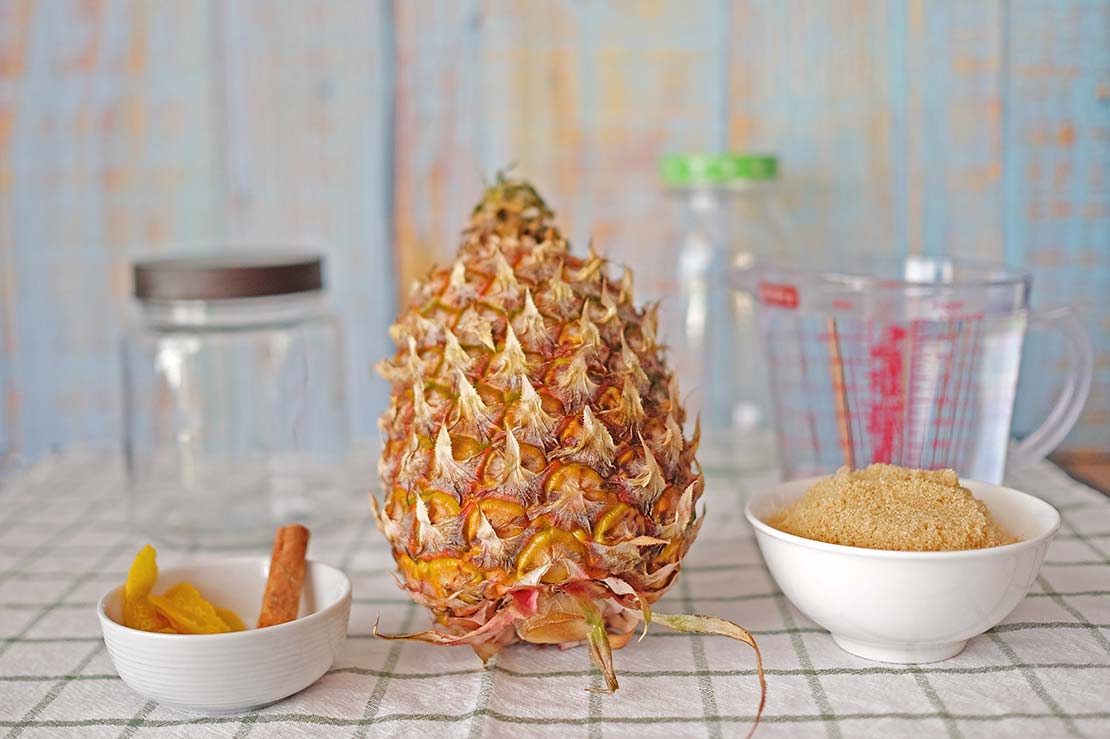
While the drink seems to be a new fad in the bar and home fermentation community, its history goes back at least five centuries to pre-Columbian Mexico. The name 'tepache' came from the Nahuatl language's 'tepiatl' and roughly translates to 'drink of corn' or 'corn water'. How and when the name came to be associated with a pineapple drink is not clear, as recipes for tepache are usually passed down orally within family members. Fermented corn drink still exists today and is colloquially known as tejuino in Mexico and chicha de jora in other parts of Central and South America.
Contemporary tepache typically refers to those made by fermenting the rinds or peels of pineapple with cinnamon and a type of regional cane sugar called piloncillo (pronounced pee-lohn-thee-yoh). Clove, anise, and habanero are among the other spices commonly used in making tepache. While tepache utilizes pineapple rinds for the fermentation process, some recipes may include the core and flesh of the pineapple for a fruitier drink. Usually, tepache has a colour between sunny yellow and dark wood, with flavours of tart pineapple and a hint of spices.
While pineapple is the main character in a tepache, some variations include quince and apple during the fermentation process. The parts used are typically the skin and core of the fruits, though the addition of slices of apple or quince is not uncommon. When adding these fruits to the tepache, the resulting drink taste like a cross between a light apple cider and spiced pineapple juice.
There is also another style of tepache known as tepache de tibicos. Found only in Mexico, tibicos grains are granules that grow exclusively on prickly pear cactus. These granules are essentially a symbiotic culture of bacteria and yeast (SCOBY), similar to those used to make kombucha. Making this tepache entails adding tibicos grain to sugar water or fruit juice, where it will then ferment. The resulting drink is non-alcoholic, though rich in nutrients. Another name for tibicos grain is water kefir grain.
Making tepache
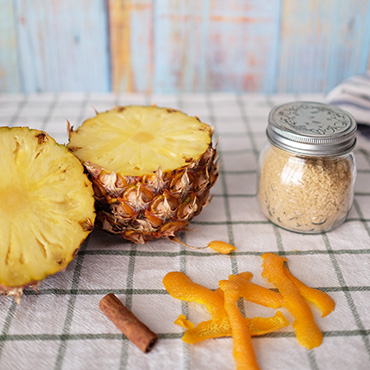
As with numerous other homemade tipples, there are no steadfast rules when it comes to making tepache. You may replace the piloncillo with another sugar source like honey or molasses. One may add ginger, clove, or even peppers and chillies for a bit more of a spice kick. However, the vital ingredients of tepache are the pineapple rinds or peels. The reason is that these parts contain the essential microbes and yeast needed to kickstart the fermentation process. You may also use the flesh and core of the fruit, which will result in a fruitier tepache.
Making tepache begins by placing the pineapple rinds into a sterilized glass jar, along with the desired sugar and spice. The next step is to fill the glass jar with water before sealing it and leaving it alone for about three days. During this time, the yeast will work to convert the sugar into ethanol and carbon dioxide. The resulting brew will have about 2% alcohol concentration and tends to be fizzy if left in an airtight container. The solids are then filtered out, and the newly made tepache needs to be kept in a place away from heat and direct sunlight. The tepache will usually last for about a week before turning into vinegar, similar to wine and sake. While that may sound bad, you can use this vinegar for cooking or as a salad dressing.
Although it is not necessary to add other yeast into the brew due to the presence of microbes on the pineapple rinds, it is not discouraged. Try adding different cultures to the drink to create unique flavours in the resulting tepache. Note that adding brewer's yeast or beer yeast will produce a tepache with higher alcohol concentration than just using the rinds.
There are a couple of things to keep in mind when making tepache. The first is to make sure the work surface is thoroughly cleaned and sanitized. This step is crucial to prevent unwanted microbes from going into the fermentation jar, which could result in unwanted mould growth and the risk of contracting botulism. The second is to make sure that the glass jar used is of fermentation grade. Do not, I repeat, do not use a decorative glass bottle like those used to serve water in cafes for fermentation projects. The pressure build-up from the carbonation of tepache has resulted in numerous horror stories of shattered bottles and unwanted injuries. Get yourself a sturdy airtight glass jar and remember to burp the brew every day. If you are unable to use an airtight jar, cover the glass jar that you use with a couple of layers of cheesecloth. This method can help prevent unwanted microbes from ruining your tepache, though the drink will lose its fizziness.
Drinking tepache
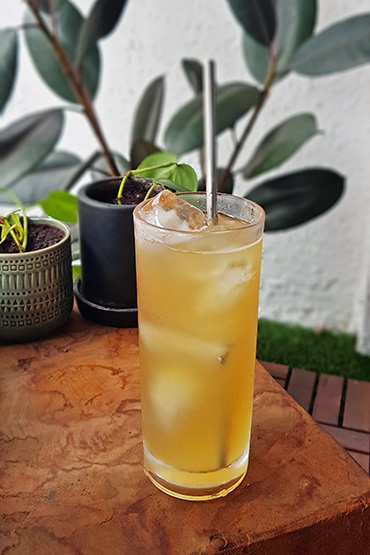
Refreshing drink especially for hot weather
Now that you have yourself a homemade tepache, what can you do with it? You can always drink it as it is with some ice. The addition of lime juice and salt also helps elevate the spiced pineapple tipple. If you want to stay true to tradition, get yourself some Mexican beer and top off the tepache with it for the added booziness.
Today, with bartenders making the most out of their pineapples, you may even take a cue from them. Tepache's tart and effervescent nature pairs well with aged spirits like dark rum and whisky. The spice also works well with real agave syrup and agave spirit, such as mezcal. Incorporating tepache into a tiki-inspired long drink like Fog Cutter or Planter's Punch will add a bit of spice to offset the sweetness of these cocktails.
However your choice of enjoying it, tepache is an excellent addition to your fermentation project, as it helps you utilize your waste and turn it into a delicious tipple with potential benefits from its probiotic qualities.
Recipe for Traditional Tepache de Piña
1 glass jar with a minimum capacity of 1.5 litre
1 ripe pineapple
1 stick of cinnamon
150 gm of brown or molasses sugar
1 litre of filtered water
Instructions
1. Rinse the pineapple with water to clean off all the dirt.
2. Cut off the rind of the pineapple. Keep the pulp of the fruit for other purposes. If you are using a larger jar, feel free to add the pulp of the pineapple into the mix.
3. Add pineapple rinds (and pulp if desired), cinnamon, and brown sugar into the glass jar.
4. Fill the glass jar with water and give it a good stir.
5. Cover the jar with a piece of cheesecloth if the glass jar has no lid. If no cheesecloth is available, a clean kitchen towel will work as well. Make sure that the towel is thoroughly clean, as any stray microbes are detrimental to the fermentation of tepache.
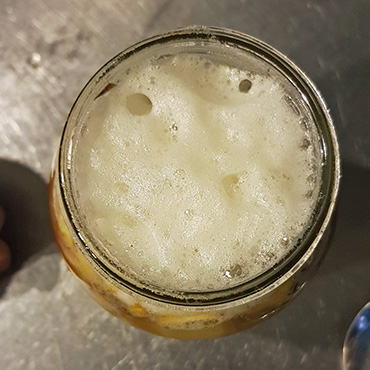
Fermenting tepache
6. Leave the glass jar and check on it after about 12 hours. Burp the glass jar to avoid the pressure building up due to the forming of carbon dioxide. If you notice a little foam on the top layer of the mixture when you burp it, it is a sign that the tepache is fermenting. However, if you notice the foam having the consistency of suds, scope it out with a spoon.
7. Check back on the glass jar every 24 hours after that to burp it.
8. After 2-3 days, taste the content. You will notice a slight fizziness sensation on your tongue and a tart musky notes. If you do, your tepache has done fermenting. Strain the solids of the tepache and put in a glass bottle. Do make sure to avoid fermenting the tepache more than three days as it will turn vinegary fast.
9. Keep the tepache in the fridge. It will last for about a week before turning into pineapple vinegar.
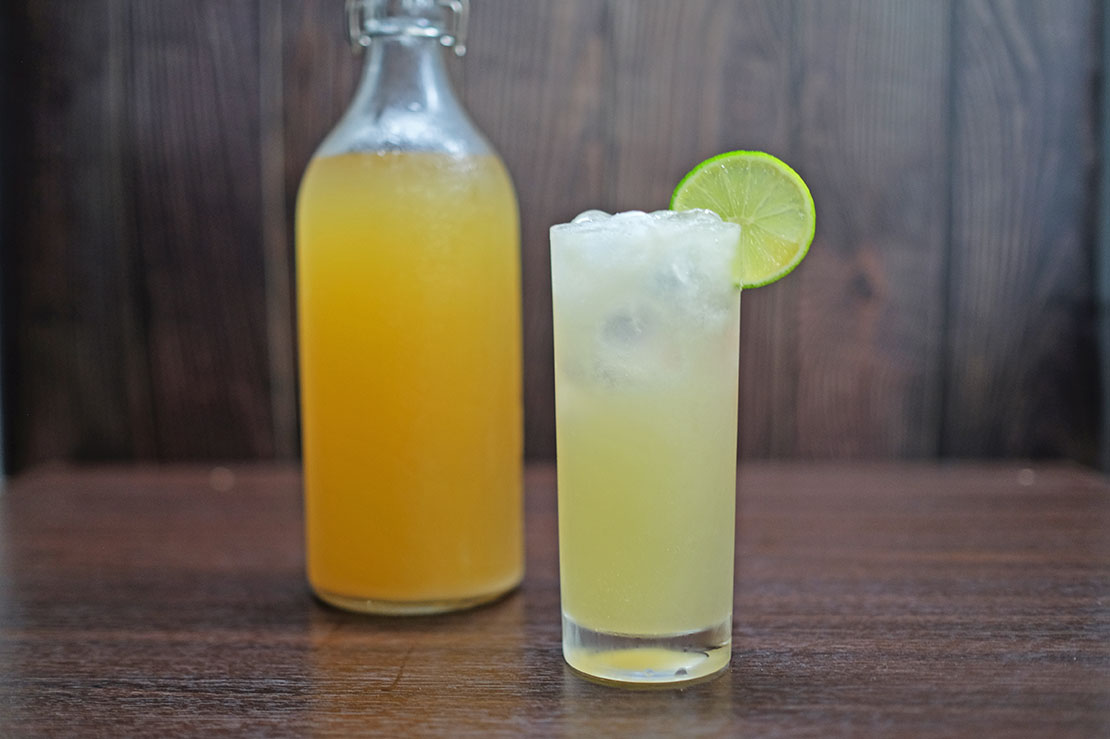
Cocktail recipe
60ml Tequila Blanco
10ml Agave Syrup
30ml Fresh Lime Juice
15ml Cointreau
45ml Tepache
Instructions
If tepache is mildly fizzy, you can mix all in the shaker and shake about 10 sec (for 7-11 ice). Double strain into a Highball Glass.
If tepache is very fizzy, don't add in the shaker and use it to top the drink instead. Both the Agave and Cointreau canbe adjusted if you find your drink too tart.
---
About Chris Chai
When he is not behind a bar dishing out whiskies and witty one-liner, you can often find Chris digging up old cocktail recipes and intriguing histories of different drinks. He believes the best way to learn about other cultures is through understanding their beverage.
